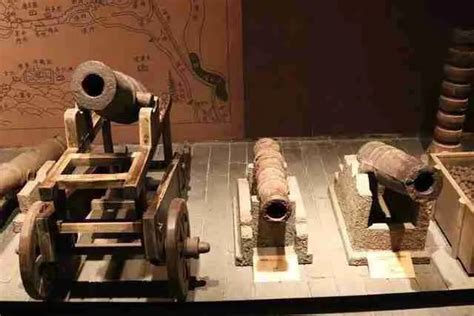Introduction

Gunpowder, a groundbreaking invention of the 9th century in China, revolutionized warfare and played a pivotal role in shaping the nation’s history. Its potent explosive force transformed the battlefield, granting China a formidable advantage over its adversaries. As the exclusive possessor of this lethal technology, China harnessed gunpowder’s power to expand its empire and establish its dominance in East Asia.
Gunpowder: A Technological Leap
Gunpowder, a mixture of sulfur, charcoal, and potassium nitrate, initially served as a simple incendiary device. However, its potential was quickly recognized by Chinese alchemists and engineers. Over centuries of experimentation, they refined its composition and developed techniques for harnessing its explosive power.
By the 10th century, gunpowder was being used in primitive weapons such as fire arrows and fire lances. The invention of the gunpowder-propelled cannon in the 13th century marked a turning point in warfare. Cannons, with their ability to hurl heavy projectiles over long distances, shattered castle walls and decimated enemy formations.
The Rise of a Gunpowder Empire
China’s unique mastery of gunpowder provided it with an overwhelming military advantage. As rival states struggled to keep pace with this technological advancement, China’s armies embarked on a series of conquests that expanded the empire’s reach.
During the Song dynasty (960-1279), China conquered vast territories in the north and south. General Yue Fei, renowned for his military prowess, used gunpowder weapons to inflict heavy losses on the Jin invaders. The Mongol invasion led by Genghis Khan in the 13th century temporarily halted China’s expansion, but even the Mongols adopted gunpowder technology after their victory.
Gunpowder’s Impact on the Military
Gunpowder’s impact on warfare was profound. It enabled armies to break through heavily fortified defenses, creating new possibilities for conquest. Additionally, gunpowder weapons reduced the importance of individual skill and strength in combat, making warfare more accessible to a wider range of soldiers.
By the 15th century, firearms had become ubiquitous on the battlefield. Muskets and arquebuses, capable of penetrating armor and delivering accurate fire at a distance, became the standard weapons of infantry. The Ming dynasty (1368-1644) utilized firearms to crush rebellions and consolidate its rule.
Gunpowder and Empire Building
Gunpowder’s military superiority provided China with a strategic edge that it exploited to expand its empire. The Ming dynasty, in particular, embarked on a series of naval expeditions that extended Chinese influence across Southeast Asia and the Indian Ocean.
Admiral Zheng He led seven major expeditions between 1405 and 1433, exploring as far as the Red Sea and the coast of Africa. His fleet of colossal junks, armed with cannons and firearms, displayed China’s technological prowess and established diplomatic relations with foreign kingdoms.
The Spread of Gunpowder Technology
Despite China’s initial monopoly on gunpowder, its technology eventually spread to other parts of the world. Arab traders and scholars who visited China during the Tang dynasty (618-907) acquired knowledge of gunpowder and its military applications.
By the 13th century, gunpowder had reached Europe, where it revolutionized warfare on a global scale. The invention of the printing press in the 15th century accelerated the dissemination of gunpowder technology, leading to its widespread adoption in warfare and industry.
Conclusion
China’s ingenious use of gunpowder transformed the course of its history and had a profound impact on the world. As the exclusive possessor of this groundbreaking technology, China expanded its empire and established its dominance in East Asia. Gunpowder’s military superiority enabled China to conquer vast territories, influence foreign nations, and leave an enduring legacy on warfare and empire building.
Table 1: Gunpowder’s Impact on Chinese Warfare
| Epoch | Weapon | Impact |
|---|---|---|
| Song Dynasty | Fire Arrows, Fire Lances | Incendiary devices, increased offensive capabilities |
| Yuan Dynasty | Cannons | Shattered castle walls, devastated enemy formations |
| Ming Dynasty | Firearms, Muskets | Infantry became more effective, improved accuracy and penetration |
| Qing Dynasty | Advanced Cannons, Explosives | Increased destructive power, improved siege warfare |
Table 2: China’s Gunpowder Empire
| Dynasty | Period | Area of Conquest |
|---|---|---|
| Song Dynasty | 960-1279 | North and South China |
| Yuan Dynasty | 1271-1368 | Entire China, Mongolia, Central Asia |
| Ming Dynasty | 1368-1644 | China, Southeast Asia, Indian Ocean |
Table 3: Spread of Gunpowder Technology
| Region | Timeline | Method |
|---|---|---|
| Arabia | 9th-10th Centuries | Arab traders and scholars |
| Europe | 13th Century | Arab and Chinese influence |
| Africa | 15th Century | Chinese expeditions under Zheng He |
| Americas | 16th Century | European explorers and colonists |
Table 4: Innovations Inspired by Gunpowder Technology
| Innovation | Application |
|---|---|
| Fireworks | Entertainment, celebrations |
| Mining Explosives | Extraction of minerals, construction |
| Rocket Propulsion | Space exploration, military |
| Photographic Flash | Capturing images, photography |
Tips and Tricks for Expanding Your Empire with Gunpowder
- Invest in research and development to improve gunpowder technology.
- Establish a dedicated gunpowder production industry.
- Train specialized artillery and firearms units.
- Develop a strategy for integrating gunpowder weapons into military doctrine.
- Utilize gunpowder’s destructive power to shatter defensive structures and overwhelm enemy armies.
Common Mistakes to Avoid
- Relying solely on gunpowder technology and neglecting other military aspects.
- Underestimating the enemy’s ability to acquire and use gunpowder weapons.
- Improper storage and handling of gunpowder, leading to accidents.
- Using gunpowder weapons recklessly, causing unnecessary casualties.
